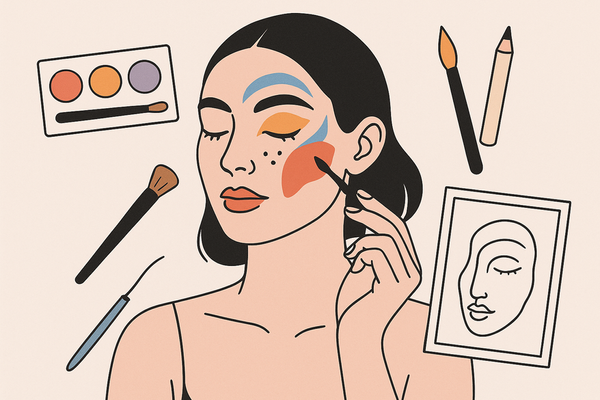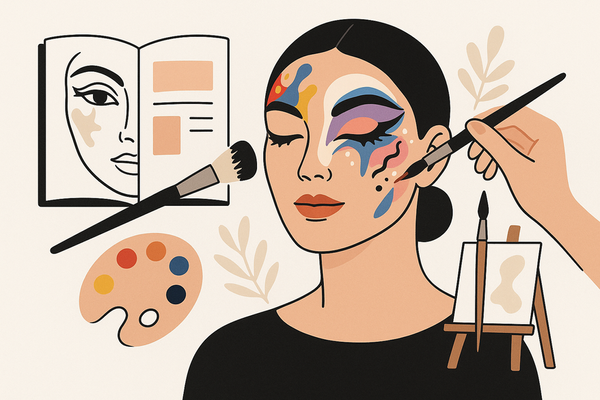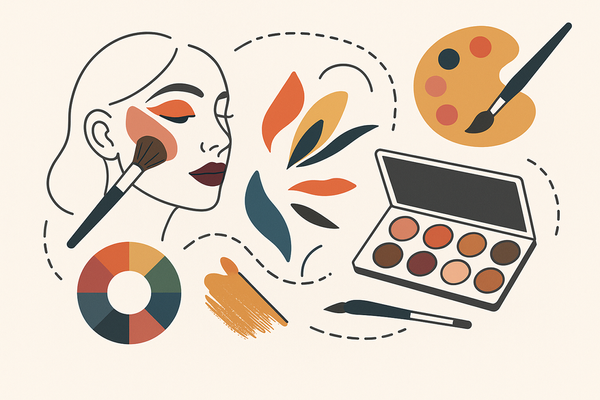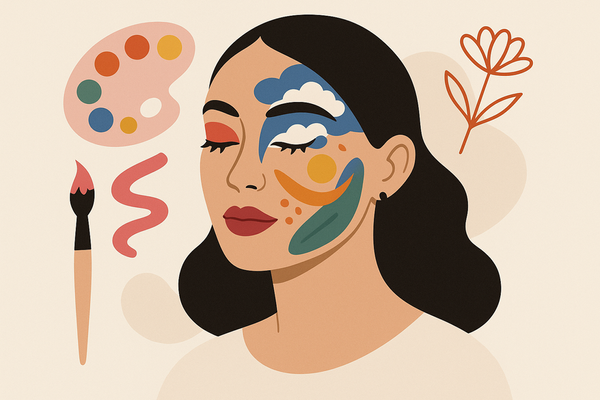Mastering Creative Makeup Designs: A Comprehensive Guide to Innovative Looks
Discover how to master creative makeup designs with this guide. Explore innovative techniques, tools, and trends to create standout, artistic looks.
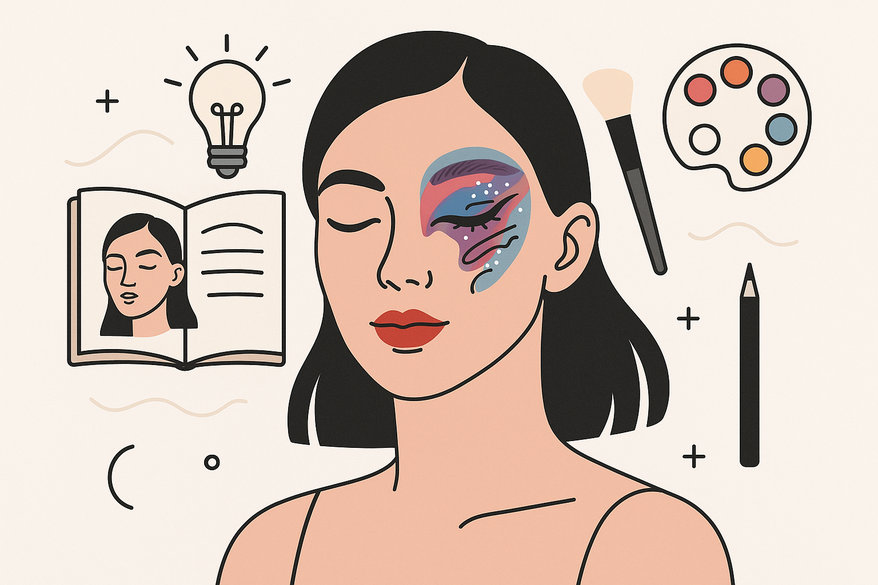
Estimated reading time: 8 minutes
Key Takeaways
- Transformative Art: Creative makeup turns the face and body into living canvases that tell a story.
- Essential Elements: Master color theory, innovative tools, and avant-garde techniques for standout looks.
- Step-by-Step Process: From preparation and product selection to execution and cleanup.
- Inspiration & Community: Leverage social media trends, educational resources, and experimentation exercises.
- Empowerment Through Makeup: Use bold designs to express identity, boost confidence, and push creative boundaries.
Table of Contents
- Introduction to Creative Makeup Designs
- The Importance of Creative Makeup Designs
- Elements That Define Creative Makeup Designs
- Step-by-Step Guide to Crafting Creative Makeup Designs
- Inspiration and Resources for Creative Makeup Designs
- Troubleshooting and Experimentation with Creative Makeup Designs
- Conclusion
- FAQ
Introduction to Creative Makeup Designs
Creative makeup designs transform the face or body into living art. These imaginative, artistic approaches to cosmetic application emphasize bold storytelling, innovation, and conceptual impact. In this guide, you’ll learn how to unlock your own creativity and bring original visions to life.
Definition for Non-Experts
Creative makeup designs transcend traditional beauty routines. They embrace dramatic shapes, unusual textures, experimental color palettes, and three-dimensional elements to create standout looks that tell a story. By following this guide, you’ll understand how to plan and execute innovative makeup art—even if you’re new to the craft.
To streamline your creative experiments, tools like Makeup Check AI offer instant analysis and digital try-ons so you can visualize bold designs before picking up a brush.
The Importance of Creative Makeup Designs
Artistic Expression
Makeup artists use the human face and body as a canvas to convey concepts, emotions, and narratives. Much like painting or sculpture, each brushstroke and contour becomes a storytelling tool.
Fashion and Editorial Influence
Avant-garde makeup sets trends on runways, in photoshoots, and magazine spreads. Iconic editorial looks—think bold color blocking or surreal textures—often originate in high-fashion environments and filter down to commercial beauty.
Personal Style and Empowerment
Individuals leverage creative makeup to explore identity and boost self-esteem. Covering everything from festival looks to social-media-inspired designs, bold cosmetics can be a form of self-expression and empowerment.
Trends and Evolution
Social media, AI tools, and global cultural exchange drive rapid evolution:
- Holographic pigments that shift color under different lights.
- Minimalist geometrics emphasizing clean lines and negative space.
- Hybrid digital-physical techniques like AR filters combined with real makeup.
Elements That Define Creative Makeup Designs
Color Theory
Color choices create emotional impact and visual coherence.
- Complementary Schemes: Opposite colors (blue/orange) for maximum contrast.
- Analogous Schemes: Neighboring hues (red/orange/yellow) for harmonious flow.
- Mood Mapping: Warm tones convey energy; cool tones evoke calm or mystery.
Technique Innovation
Key methods in avant-garde applications:
- Graphic Eyeliner: Sharp, architectural lines in unexpected shapes.
- Intricate Contouring: Sculpting cheekbones and temples for dramatic effect.
- Face Painting: Full-canvas artistry using cream paints and brushes.
- Special Effects: Faux wounds, glitter tears, airbrushed gradients.
Unique Tools and Materials
Beyond standard brushes:
- Airbrushes for seamless gradients.
- Stencils and painter’s tape for precision shapes.
- Sponges and fingertips to blend or smudge edges.
- 3D Elements: Rhinestones, sequins, feathers, prosthetics applied with medical-grade adhesive.
Iconic Examples
- 1960s Mod Looks: Bold color blocking and graphic lines redefined eye makeup.
- Pat McGrath’s Runway Artistry: Metallic foils, feather motifs, and hyper-pigmented finishes.
- Cultural Motifs: Tribal face markings, mythological inspirations, and art-movement nods like Surrealism or Pop Art.
Step-by-Step Guide to Crafting Creative Makeup Designs
- Preparation
Cleanse and moisturize with a gentle cleanser and hyaluronic-acid moisturizer for a hydrated base.
Prime and patch-test new products to avoid allergic reactions. - Product Selection
High-pigment cream paints, bold liners & specialty glitters, medical-grade adhesives, synthetic brushes, natural sponges, stencils. - Execution Strategies
– Color Blending: Layer pigments from light to dark.
– Graphic Detailing: Sketch shapes lightly, secure stencils, fill with pigment.
– 3D/Textural Elements: Apply glue and press decorations.
– Contouring and Sculpting: Use cream or powder contours.
– Layering and Cleanup: Build in thin layers, correct edges with micellar water.
Inspiration and Resources for Creative Makeup Designs
Sources of Inspiration
- Social Media: Instagram hashtags (#creativeMakeupDesigns, #editorialmakeup), TikTok challenges, Pinterest boards.
- Influencers and Gurus: Pat McGrath Labs, @jlovesmac, Chloe Morello.
- Art History & Culture: Surrealism, Pop Art, tribal and mythological motifs.
Education and Community
- YouTube series by professional makeup schools and Makeup Check AI blog posts.
- Online Forums: Reddit r/MakeupAddiction.
- Courses and Workshops: Online Makeup Academy, local beauty schools, masterclasses.
Troubleshooting and Experimentation with Creative Makeup Designs
Common Challenges & Solutions
- Smudging or Fading: Use silicone-based primer, long-wear formulas, setting spray.
- Achieving Symmetry: Draw guidelines, use stencils or a small level tool.
- Skin Reactions: Patch-test new products, opt for hypoallergenic options.
Embracing Experimentation
- Treat “mistakes” as creative detours.
- Exercises: Random color pairings, blindfolded brush trials, texture mash-ups.
Conclusion on Creative Makeup Designs
Creative makeup designs merge artistry, innovation, and self-expression. By mastering color theory, embracing unique tools, and refining your execution strategies, you can push the boundaries of traditional beauty. Trends will evolve—holographic effects, geometric minimalism, AI-driven concepts—but your personal creative signature remains limitless. For more avant-garde inspiration, visit avant-garde makeup trends of the future.
Ready to make your own mark? Share your looks on social media with #creativeMakeupDesigns or join a community forum to get feedback. The world is your canvas—let your imagination run wild!
FAQ
What are creative makeup designs?
Creative makeup designs are artistic applications that transform the face or body into a storytelling canvas, using bold colors, textures, and three-dimensional elements.
How do I begin experimenting with creative makeup?
Start by researching color theory, gathering high-pigment products, and practicing basic techniques like graphic liner or contouring. Use digital tools to plan looks, then gradually introduce textures and 3D elements.
What tools and materials are essential?
Key items include cream paints, bold liners, specialty glitters, stencils, airbrushes, medical-grade adhesives, and blending sponges. Hypoallergenic options and patch-testing are crucial for safety.

